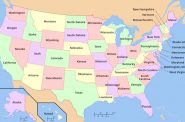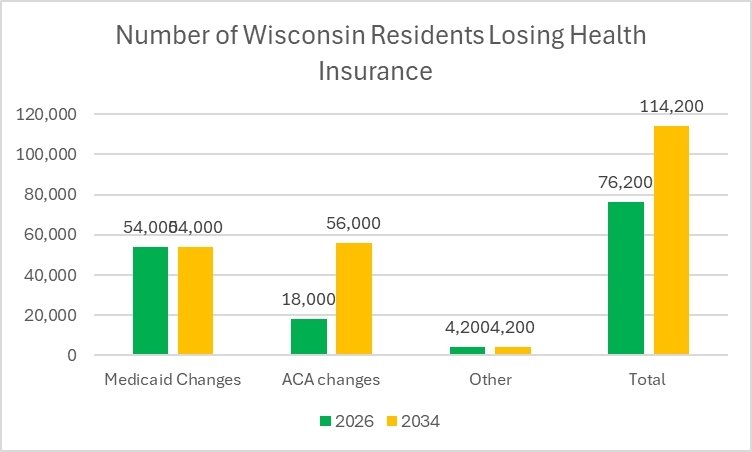Why Do Trump and GOP Lawmakers Want More Uninsured Americans?
Cutting ACA subsidies would harm their own supporters.

Connor Tarter (CC-BY-SA)
Since the passage of the Affordable Care Act (ACA) during the Obama administration, the number of Americans without health insurance has declined. Yet the Trump administration and the Republican congressional majority appear intent on reversing that trend.
The ACA had two main elements. First, it offered states federal funding to expand Medicaid eligibility to people earning up to 138% of the federal poverty level (FPL). In 2025, that equates to about $23,600 for an individual. To encourage states to expand Medicaid, the federal government set its share of expansion costs higher than for traditional Medicaid.
The next graph shows the expansion of Medicaid before and after the ACA, using data from KFF, formerly the Kaiser Family Foundation. Each yellow dot represents a state. The horizontal axis shows the percentage of each state’s population enrolled in Medicaid before the ACA. The vertical axis shows the percentage enrolled as of June 2025.
On average, enrollment increased by 5 percentage points, as shown by the trend line. For example, states with 20% Medicaid enrollment before the ACA would now be expected to have about 25%. This result surprised some observers, who expected states with lower initial enrollment to see greater growth than states with higher enrollment.
Wisconsin is represented by the black ring. Its Medicaid enrollment rose from 16.3% to 18.7%, less than the growth in most states. This relatively modest increase reflects the state’s approach to the ACA. Wisconsin is one of 10 states that declined the federal government’s offer of more funding for Medicaid. It is the only one of the 10 that set the poverty level as the upper income limit for its Medicaid program, BadgerCare.
This decision meant some people, often parents with children, no longer qualified for BadgerCare. But they could purchase subsidized private health insurance on the ACA Marketplace. That made room in BadgerCare for childless adults with incomes below the poverty level.
The result is that Wisconsin’s Medicaid program has an upper income boundary of 100% of the poverty level rather than the 138% typical of most states.
The next graph shows KFF’s estimates of the number of Wisconsin residents projected to lose health insurance starting in 2026, shown in green. The estimates are based on calculations by KFF, using data from the Congressional Budget Office, and carry a degree of uncertainty.
Not surprisingly, small-business owners and employees are disproportionately represented among those who get their insurance through the ACA Marketplace, according to KFF. As the next graph shows, while they make up 16.3% of the adult population under 65, they account for nearly half — 48.2% — of small-business owners and employees.
For many, the loss of enhanced tax credits could make health insurance unaffordable. Traditionally, small businesses have been pillars of the Republican Party.
This reflects a pattern seen during the Trump administration: policies often harmed some of his own supporters.
In recent years, the number of Americans without health insurance has dropped significantly. It is disturbing that Trump and the state’s congressional delegation are working to roll back that progress.
If you think stories like this are important, become a member of Urban Milwaukee and help support real, independent journalism. Plus you get some cool added benefits.
Data Wonk
-
Life Expectancy in Wisconsin vs. Other States
 Dec 10th, 2025 by Bruce Thompson
Dec 10th, 2025 by Bruce Thompson
-
How Republicans Opened the Door To Redistricting
 Nov 26th, 2025 by Bruce Thompson
Nov 26th, 2025 by Bruce Thompson
-
The Connection Between Life Expectancy, Poverty and Partisanship
 Nov 21st, 2025 by Bruce Thompson
Nov 21st, 2025 by Bruce Thompson






















Great and simple data to explain the situation. Thanks!
Question: To be clear, what you’re saying is that ~76,000 Wisconsinites will lose health insurance in 2026 alone if the Republicans get their way. And, this 76,000 represents ~16% of under 65yo adults, but a disproportionate ~48% of small business owners and employees. Correct?
To answer your question: Republicans don’t want to extend these benefits because they hate Obama and Obamacare, and they are culture war masters. Willie Horton. “Welfare Queens.” They always have their bogeymen.
The bigger question is the age old one, “Why do so many conservative voters vote against their own (economic) interests? Answer: They aspire for more, have been told by their masters and believe that poor/BIPOC/immigrant people are the reasons they cannot get ahead, and it’s always been easier to scapegoat others than to listen to reason.
In other words, the treacherous leading the gullible and the similarly awful.
Speaking of KFF, a survey conducted SEPT 23-29 found that 78% wanted Congress to extend expiring tax credits for people who buy health insurance through the ACA marketplace.
92% of Democrats, 82% of independents, and 59% of Republicans supported an extension the poll found.
61% of Republicans say they would place the blame on Democrats in Congress if these subsidies aren’t extended. Frustrating country to live in right now.
I blame a lot on the right wing media/talk shows, not to mention FOX “News.”.
You can’t use reason to convince cult followers. I’m not sure even the inevitable pain will work, since they believe “the libs” are causing whatever harm comes. It’s completely irrational but they’ll believe it to their death. Bless their hearts.
Childishness. Vindictiveness. Pure, unadulterated hatred.
These are the reasons I see Trump and his Reich wanting to create the environment where individuals and families (that are already being crushed by daily, weekly and monthly household expenses) are faced with exorbitant increases in their health care costs, or the complete loss of those benefits, while at the same time offering NO OTHER PLAN(S) AS ALTERNATIVES. Not even a “concept of a plan”! (Remember that? Simpler times.)
The spineless reTrumplican representatives in the House and Senate are too afraid of retribution from him and his maniacal supporters, so they say and do nothing to stem the tide of dictatorial authoritarianism that is staring them right in their deer-in-the-headlights faces, while at the same time ignoring the best interests of their constituents that put them in the positions they are in, and whom they are supposed to be representing.
Is America great again yet?
Thank goodness for Milwaukee’s network of free community clinics. Here’s are some lists of free clinics: http://www.wifc3.org/clinics; https://city.milwaukee.gov/Health/Services-and-Programs/CHAP/freeclinics
To answer TosaGramps’ question, no this country is not great again. HWSNBN is turning this country into a fascist banana republic. There is no greatness in that. HWSNBN’s vision–along with the Heritage Foundation’s Project 2025 wants to return this country to time when the “gilded elite” and their excesses dominated the US economy and caused recessions every decade until 1929. That year, they plunged the global economy into depression.
The only good things about this reactionary vision are, abortions were legal until 1911 and women were granted the right to vote. However, that hardly compensates for the enormous harm HWSNBN, and his minions are creating. The ones who will be hardest hit are the MAGA supporters. Then again, increasing poverty among farm and working-class families i.e. increasing the wealth gap–was part and parcel of the Gilded Age. HWSNBN isn’t trying to make this country great again; he and the oligarchs are driving the country into the ground so they can amass obscene levels of wealth by feeding off working families.
I wish the Democratic Party or alligned PACs would run some ads to point out information like this.
I’ve been seeing a lot of Mandami ads on the internet lately and I can see his appeal by very frankly confronting the lies being said about him. I think that tact would be helpful to lead people to understand the consequences of what the Trump administration is doing.
I guess I’m not with it – HWSNBN is the acronym for ???? I can guess a little… Thanks
Republicans always remember their roots: More money for wealthy people. Unfortunately for them, that’s not a very populous demographic. So, to get the votes they need, they churn out “culture war issues” to lure in socially conservative voters. They support some anti-woke policies or pass some trans-gender laws or pretend they care about unborn babies to get the votes they need to do the thing they are actually interested in doing: Reducing the size of government. Not only to justify tax cuts that benefit them the most, but also to weaken the only entity that can reign in the hegemony of billionaires and their businesses. The main thing DOGE did was eviscerate the government’s regulatory powers. That $250,000,000 Elon spent getting an incompetent elected has returned billions to him and his companies.
@jkmoch, guessing it means “he who shall not be named”
Obamacare was a combo of expanding Medicaid eligibility and taxpayers paying insurance companies to “cover” people? Not for one second did it make health care “affordable” or change the system in any meaningful way.
Remember Obama saying “if you like your doctor you can keep your doctor.” That was a lie.
Remember Obama saying “if you like your health insurance plan you could keep your plan.” That was a lie.
All you liberals are indoctrinated CNN & MSNBC fools.
ObamaCare (ACA) didn’t reduce the cost of health care, but it DID reduce the cost of health care INSURANCE.
Before ACA, insurance companies had employees whose sole task was to search for a “pre-existing condition” to justify denying coverage. That non-productive expense has disappeared. ACA also placed limits on insurance company profits.
Also, there was nothing in ACA that prevented you from keeping a doctor you liked. All you had to do was chose a subsidized plan which included that doctor.